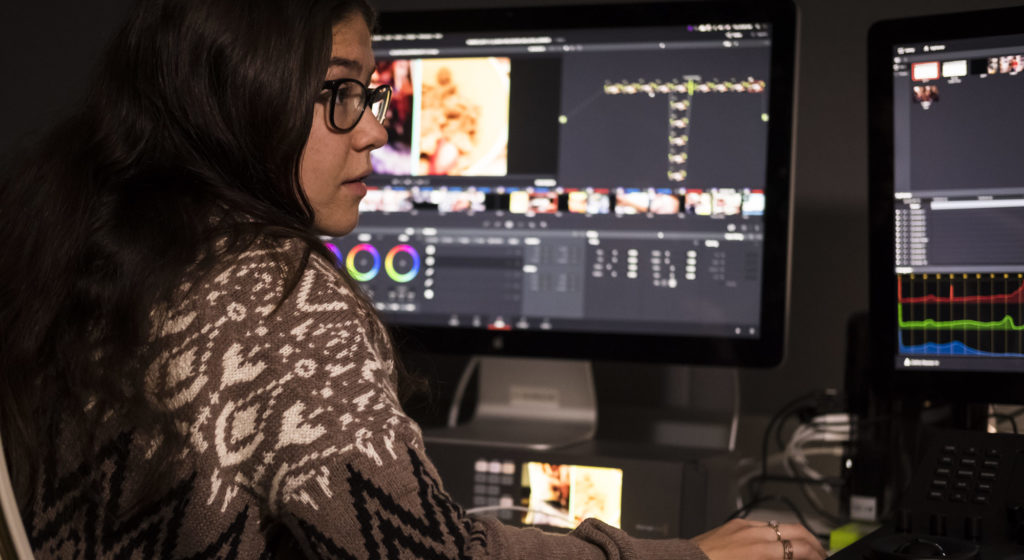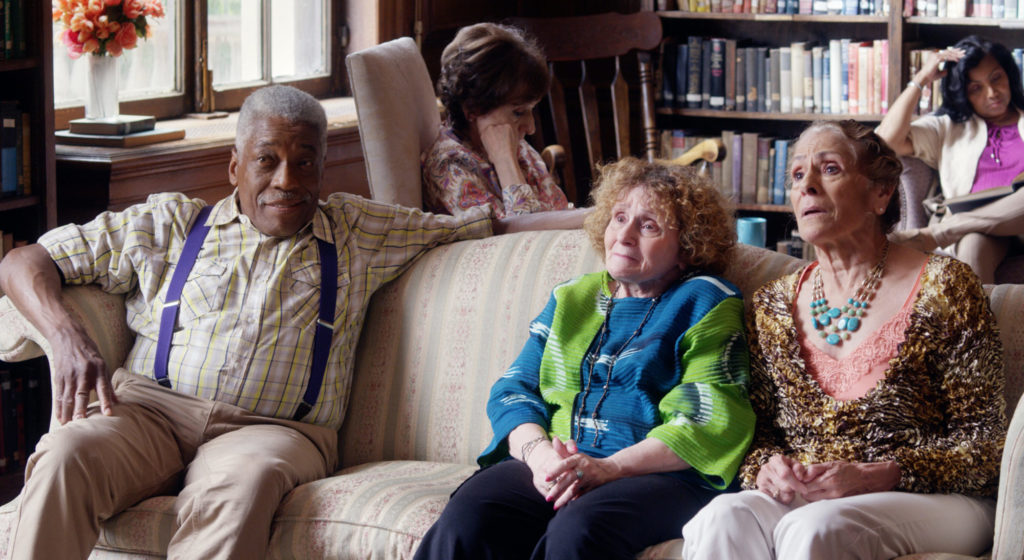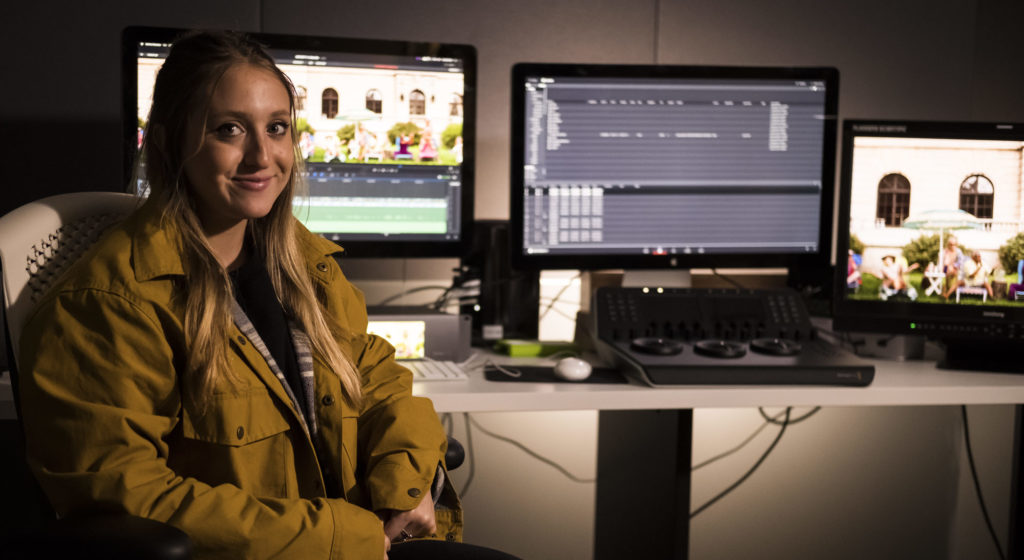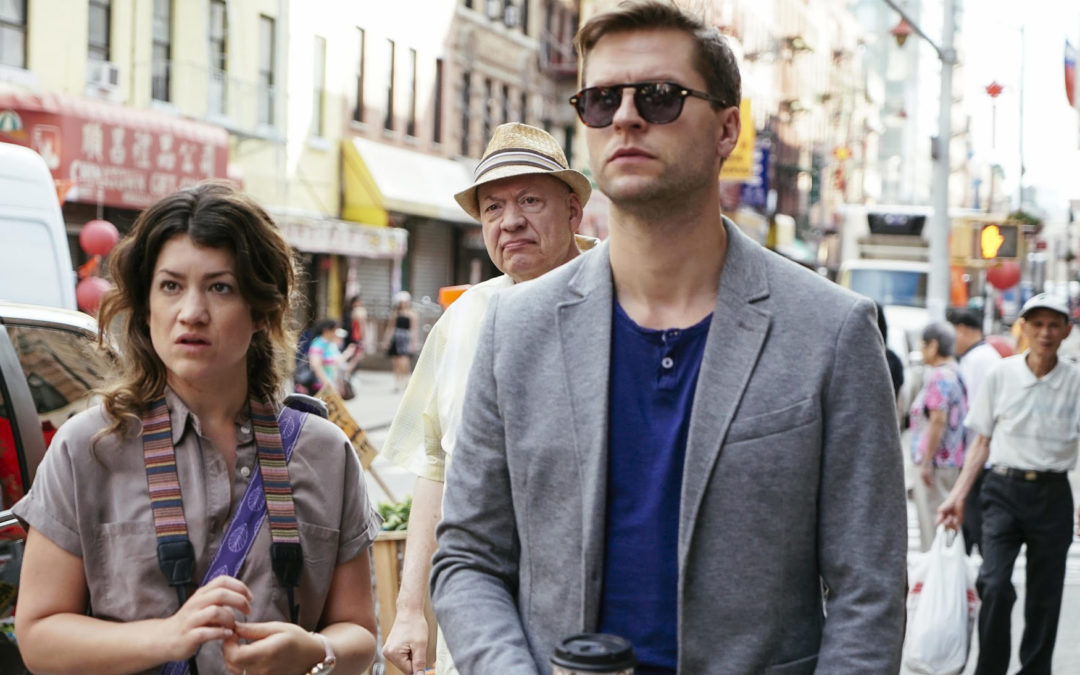Fremont, CA – February 9, 2018 – Blackmagic Design today announced that “Half-Life” and “Maturity,” two new television pilots to air in January on New York City (NYC) Media, were edited and graded using DaVinci Resolve 14. The NYC Mayor’s Office of Media and Entertainment (MOME) and Brooklyn College’s Feirstein Graduate School of Cinema chose the two shows for development over 300 other scripts to be broadcast to the more than 18 million households that receive NYC Media.
“Half-Life,” written and developed by Patty Carey-Perazzo, follows Patty, who is torn between the demanding worlds of family and film production. “Maturity,” written and developed by Robin Rose Singer, follows Jessica Meadowbrook, a nurse from Kansas who is one week into her brand new job at Shady Breeze, a senior housing facility in the Bronx. Both shows were shot in NYC with post production completed at the Feirstein Graduate School of Cinema.
Charles Haine, post production producer for both shows, decided to consolidate all the editing and color correction for the pilots on DaVinci Resolve 14 after discussions with the editorial teams. Color correction for both shows was completed by Alex Berman, with editing for “Half-Life” by Kaitlyn Cortes and editing for “Maturity” by Lily Kleinman.
“Both projects had specific challenges that made them unique to edit and grade. ‘Half-Life’ was shot with two cameras in 30 different locations over five days. ‘Maturity’ was a sitcom shot in a senior citizens home, so the grade had to turn what could potentially be a dull and gray feel to vibrant and sunny,” said Haine. “Creating a cohesive look and storyline for both of these required high-end editing and color correction early in the post process, which is why we chose DaVinci Resolve 14.”

For “Half-Life,” Cortes was given the job of evoking tension between the domestic and professional worlds of an NYC-based location scout. She was given a huge amount of multi-camera footage that varied in look and feel between the 30 locations. Using DaVinci Resolve, she was able to edit while working closely with the assistant editor through the software’s new chat feature, and she also used DaVinci Resolve’s Dynamic Project Switching feature to allow her to quickly switch projects or copy and paste clips, timelines and node settings back and forth.
“The editing tools in DaVinci Resolve were very familiar, and I was able to jump right in. DaVinci Resolve has some incredible features that let me easily experiment and try new editing paths. In particular, its Dynamic Project Switching was great,” said Cortes. “Being able to switch without having to shut down the page gave me a really seamless way to work, and with all the very different-looking footage, this let me experiment and go back and forth between ideas quickly.”
“I also loved being able to stay in the same system as Alex. Since we were both working in DaVinci Resolve 14, we were able to use the chat system built into the software, which let me really get into the groove of editing,” Cortes continued.
For “Maturity,” Kleinman was given the task of bringing together footage from two cameras that were supposed to shoot over several days, but in the end, the story had to take place in a single day. “Telling a story over a number of days versus just 24 hours is a much different edit. Editing and color correction had to be tightly coordinated to make sure the story, as well as the look and feel, matched. DaVinci Resolve’s editing features were very powerful and the UI experience was excellent,” said Kleinman.
Kleinman also took advantage of working within the same software as the colorist. “The DP shot flat Red dailies, and making editing decisions on those will just drag down the feeling. Instead, by editing and grading in DaVinci Resolve and not having to round trip every change, we were able to quickly show the various edits with a grade. No one was viewing an uncolored scene of the show ever, and it was great not getting comments at meetings showing early passes where people just focused on bad color in the shots instead of the edits,” she added.

When grading both pilots, Berman was tasked with addressing a series of unique challenges with color correction.
“With ‘Half Life’ the first basic challenge was to bring consistency to the lighting in scenes that were shot over time with ever changing sunlight. After balancing the scene I used Davinci’s Power Windows to bring the focus to certain characters, and at certain times added sharpness to their faces. I also manipulated outside the window to adjust the depth of field of each particular clip,” said Berman.
He continued: “The DP shot beautiful images in 6K. There are shots that were originally composed as wide shots that were later cropped into close ups. When the wides and CU’s cut together the difference in the texture of the images was apparent to me. So I used Davinci’s exceptional Noise Reduction tool in varying degrees to the blow ups and also added a bit of sharpness back in. Then for the clips that were kept as wide shots I used the Davinci’s Blur tool to gently to take some of the edge off. As a result the scenes have a unified texture.”
“The cinematography of Maturity was also of great merit. The Director, DP, and I built a painterly, almost Monet like impressionistic look. Soft and pure. Then we took a step stronger with saturation and rich blacks. The lead actress is stunning with her pristine alabaster flesh tone contrasting against her lush red hair. No matter what direction we went with the overall look of each scene I intended to preserve this purity,” Berman said.
In a scene which was shot on a bleak, gray day we wanted to achieve a happier, brighter, and slightly warmer feel. I used Davinci’s custom curves to push it in that direction and the HSL qualifiers within a window to maintain her white skin. Also, the use of Davinci’s Camera Raw Palette was essential in how easily I could retrieve highlight detail by adjusting the ISO and exposure on particular clips throughout the program.“
“Half-Life” and “Maturity” will air on NYC Media in January 2018. For more information, please visit: http://www.ny1.com/nyc/all-boroughs

About Blackmagic Design
Blackmagic Design creates the world’s highest quality video editing products, digital film cameras, color correctors, video converters, video monitoring, routers, live production switchers, disk recorders, waveform monitors and real time film scanners for the feature film, post production and television broadcast industries. Blackmagic Design’s DeckLink capture cards launched a revolution in quality and affordability in post production, while the company’s Emmy™ award winning DaVinci color correction products have dominated the television and film industry since 1984. Blackmagic Design continues ground breaking innovations including 6G-SDI and 12G-SDI products and stereoscopic 3D and Ultra HD workflows. Founded by world leading post production editors and engineers, Blackmagic Design has offices in the USA, UK, Japan, Singapore and Australia. For more information, please go to www.blackmagicdesign.com






